Estimated reading time 10 minutes, 42 seconds.
One glorious day last summer, I flew five passengers, one at a time, in a 1936 Stearman Model 75 belonging to Wings Over the Rockies Air & Space Museum in Denver, Colorado. Each passenger’s life was forever changed by the experience.
First up was a spry, 70-something woman, who admitted as she struggled up the wing to the front cockpit that she was scared of heights. I told her I’ve met a fair number of pilots who are scared of heights, too, but they assure me that flying feels a lot more secure to them — and isn’t nearly as scary as standing on the edge of a roof, or climbing a ladder. She flew about 30 minutes with me, absolutely loved it, and admitted after the flight she only wished she had started flying earlier in her life.
The next rider, a young pilot, decided after flying the Stearman that it was time to get his tailwheel endorsement. He said he was always looking for ways to challenge himself; I told him the new awareness he would learn flying a taildragger was one of the very best ways to grow as a pilot. And that new awareness would serve him well, no matter what other airplane he’d one day fly.
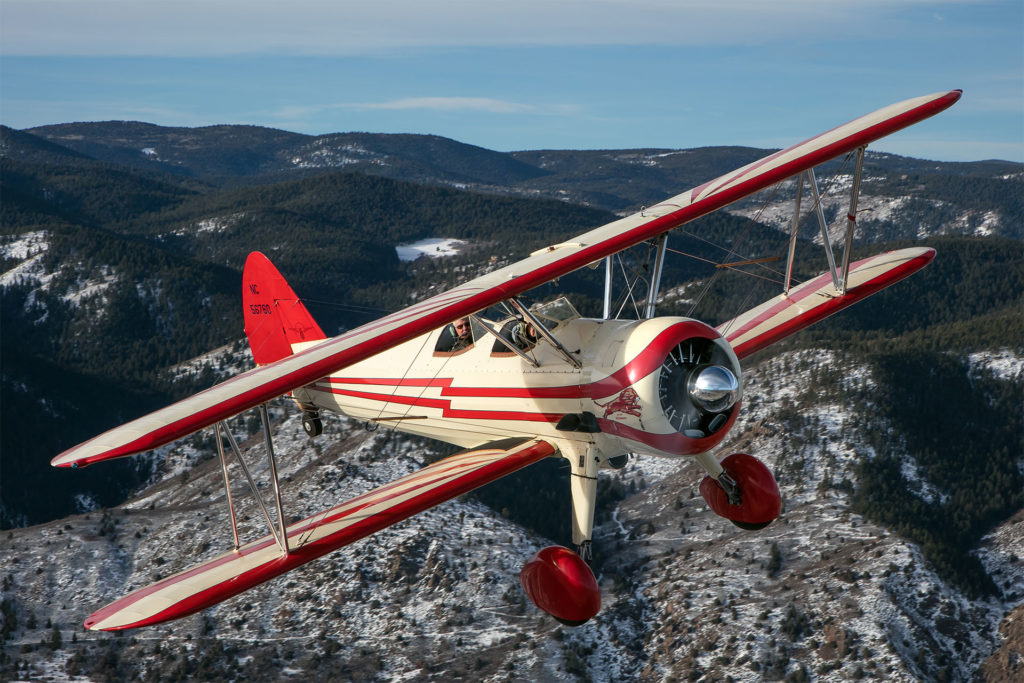
Another passenger, this one a fourth- and fifth-grade teacher, flew with me in spite of her admitted fear of “little airplanes.” I commended her for her bravery, and during our flight, she reluctantly took the controls — after the third time I offered. As she banked the big wings gingerly, she got very quiet. I watched her in the little mirror on the trailing edge of the wing above the front cockpit. She was smiling. Fear had been eclipsed by discovery, at least for the moment. Stearman magic.
Just before removing her headset after our flight, the teacher promised me she’d take the message of working through her fears back to her students. That’s an important life lesson to teach our children. And our adults, too.
The next passenger, also a pilot, was celebrating his 56th birthday. He decided after flying the Stearman that he was going to start shopping for an airplane instead of buying an exotic car (he had his eye on a red Maserati). He told me his brilliant wife convinced him to go to the airport “this fine morning,” rather than stop at the exotic car dealer. Brilliant lady, indeed.

But perhaps the most memorable of all the passengers this day was Jake, a slight, 20-something man, whose career as a live sound engineer had been silenced by the coronavirus. Live sound engineers are no longer needed when large groups of people stop congregating for concerts, big workshops and conferences — what we have come to call “super spreader events.”
Let me tell you a little more of Jake’s story.
***
“CLEAR!” I yell, then inspect the area in front of the Stearman; catching the thumbs up from my “pusher” — a title of fondness old barnstormers give their hard-working ground crew who tirelessly brief, load and unload passengers. Pressing the starter button, a high-pitched whir spins the eight-and-a-half-foot diameter Hamilton-Standard propeller while I count a few blades, then swing the big magneto switch to “BOTH.” The ancient Pratt & Whitney R-985 engine, built right after the Great Depression, chuffs to life. Oily white smoke billows along the right-side fuselage and lower wing, and all nine snotty cylinders finally settle into a deep, satisfying, loping rumble. Pure music to lovers of old, round motors. It’s one of my favorite songs in the whole sonic universe.
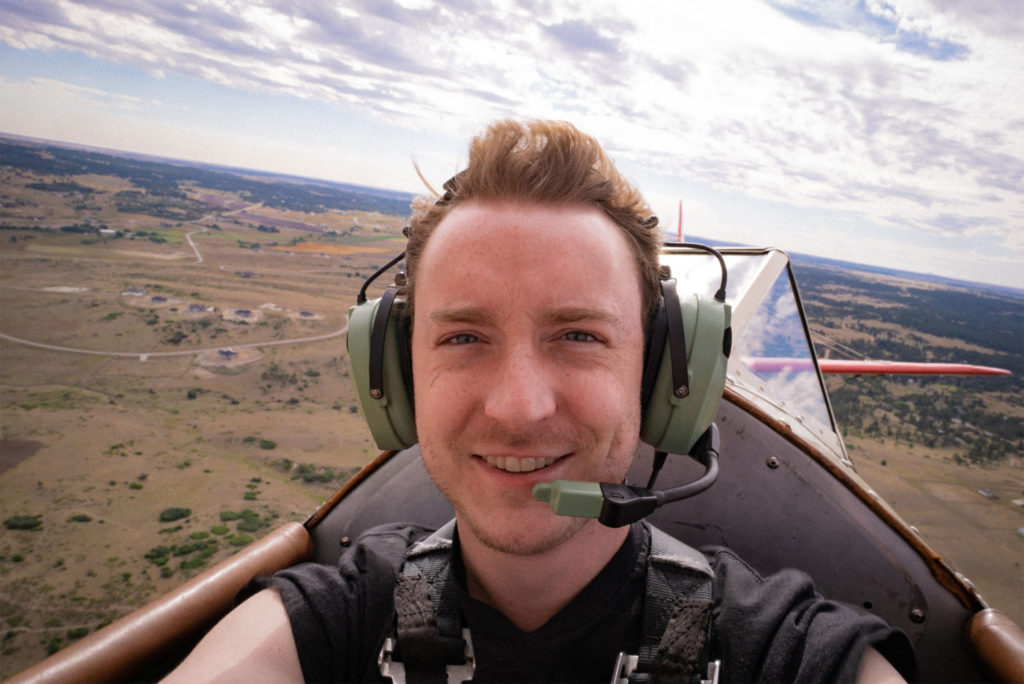
With a glance to the mirror, I note that my sound engineer-passenger hears that music, too.
“How ya doin’ up there?” I ask into the intercom, as the big radial idles at 500 RPM to shake the kinks out of her tender, dry places before advancing the throttle.
“I’m excited!”
“Me too!” I admit honestly, and assure him that we’re going to have fun. “If we’re not having fun, we’re probably forgetting something…”
As we S-turn down the taxiway, headed for the assigned runway, I explain a few of the things he might wonder about: why we S-turn like this; what the other pilots are saying on ground control frequency; identifying other airplanes we see around us. He listens intently, asking questions with senses open, soaking up every tasty morsel I offer.
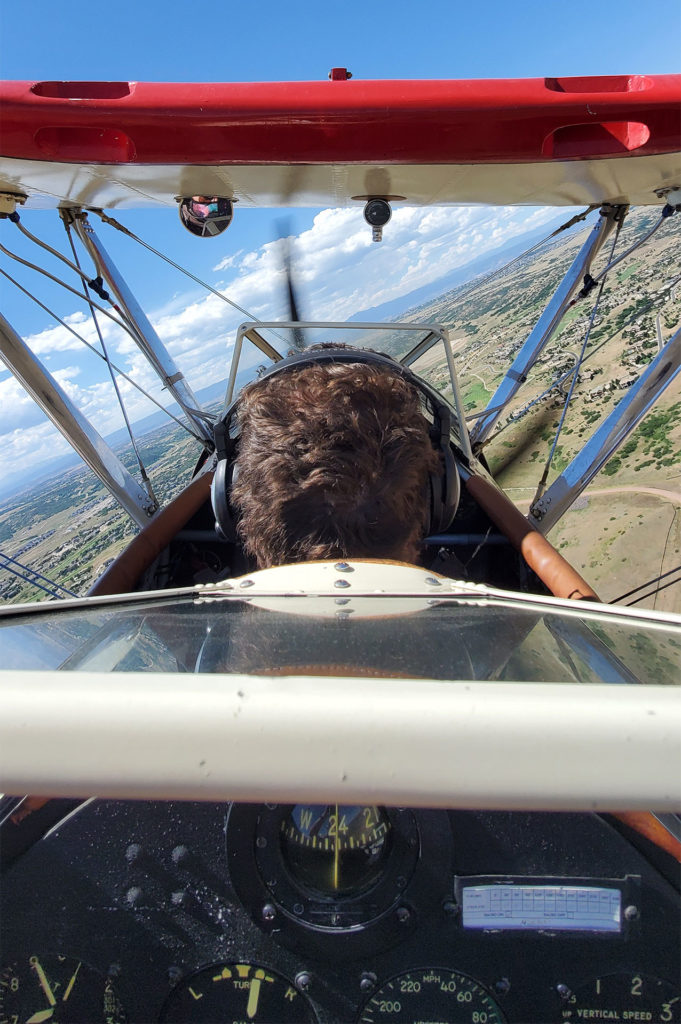
I watch him in the mirror as he studies his new environment. He’s completely living in this moment, and loving the experience… He’ll remember this day for a long time.
Jake shares his newfound unemployment concerns as we wait for takeoff clearance from the tower, and you can hear in his voice that the thought of flying airplanes for a living had never really seemed so… possible — until now. “Pivoting” in the time of COVID-19.
We aren’t flying very high — about 1,000 feet. Or very fast — maybe 80 miles per hour — because, hey, we’re not going “somewhere.” We’re already there. And in mighty fine, 1930s style, I might offer. I remind him that this ol’ airplane has been doing this same, wonderful kind of magic for 84 years. Once we leave the urban sprawl behind our rudder, the picture framed by those wings hasn’t really changed all that much over those decades.
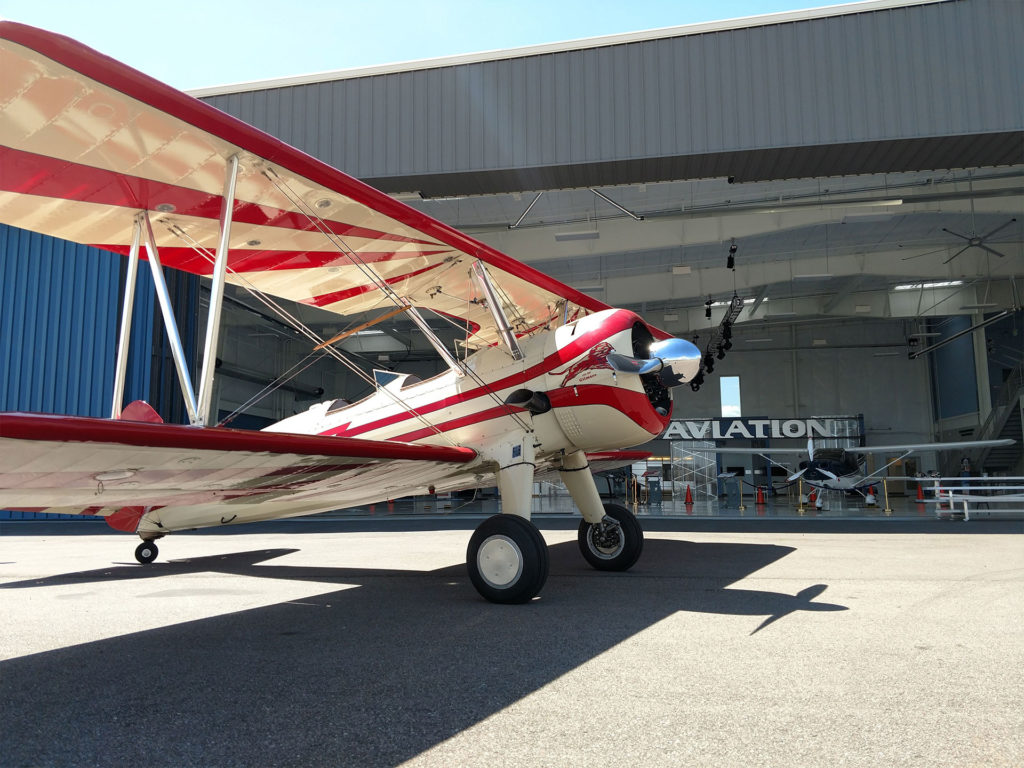
Like many kids, Jake played a lot of video games while growing up. And he loved airplanes — military airplanes, especially — and was particularly captured by the articulating wing of the F-14 Tomcat. He just knew someday he would become a fighter pilot.
With my coaching, Jake eagerly takes the stick — as I encourage all my fares to do (and all but the completely petrified muster the courage to try). He seems to immediately absorb the awe of controlling the flight path of a 1936 radial-engined biplane through this robin’s egg-blue Colorado sky. But this isn’t his first time flying; he’d already dreamed it many times before as a wee lad. And flown countless hours with video games and flight sims.
I watch his eyes in the mirror as he looks left and banks smoothly. I’d seen this look before. Jake, the former live sound engineer’s easy smile told the whole story: he was hooked. The old airplane had quietly wrapped yet another unsuspecting soul into her warm web of possibility. Another life forever altered. It’s just what 84-year-old biplanes do.
Flying the Stearman snapped Jake’s dream of being a fighter pilot right back into focus. But this short flight showed him that there might be more to the sky than facing off against enemy aircraft. He wondered aloud if freight, passenger or executive flying might offer a better way to spend one’s life moments. I offered that there are many, many ways to spend a lifetime in the sky.
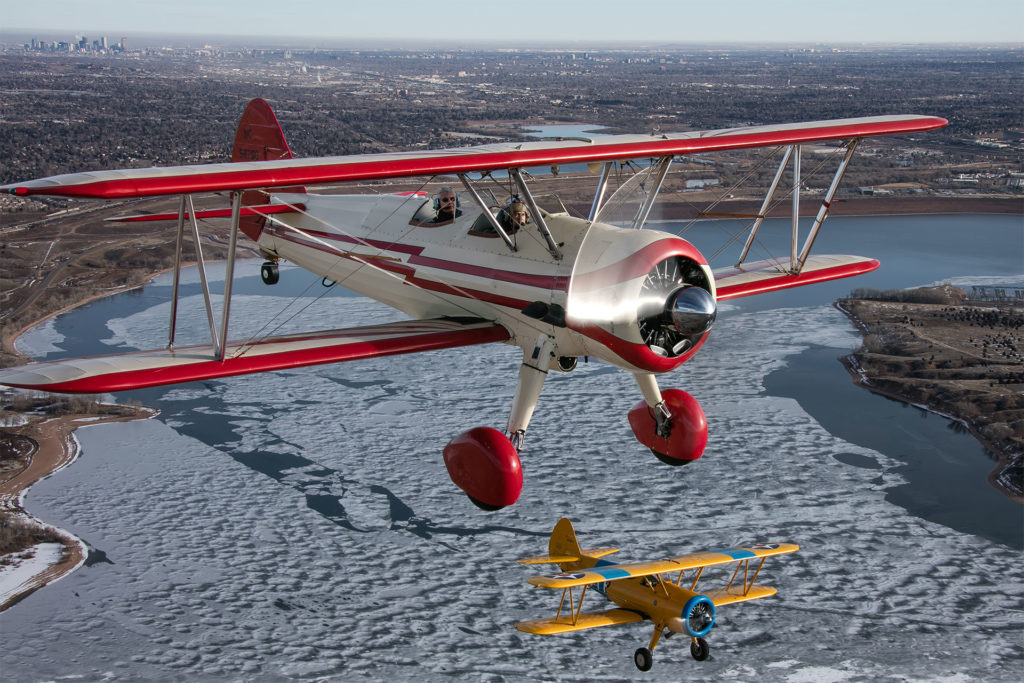
***
Jake and I talked several times in the months following our flight. “What happened on that ride?” I asked him on one of our phone conversations.
“I’m not sure,” he answered thoughtfully. A long pause to relive those precious moments. Then, “It was like a switch clicked on that had been turned off 10 years before.” That’s when he answered the siren song of a different path, called “the sound business.” Yet, he felt something was always missing in that world.
Every single time he gets into an airliner, he chooses a window seat, if possible, and loves watching the airplane pull away from the earth, the shadow getting smaller and smaller as the jet climbs to altitude. “It never gets old…” he told me. That scene played again in the Stearman as ancient red and white wings of fabric carried us into the Colorado sky, that airplane shadow below us becoming smaller and smaller. Only this time, Jake’s hands were on the controls.
As I finish writing this piece, Jake’s email buzzed with excitement about his upcoming first lesson at a local flight school. The old Stearman biplane had gently nudged him toward a future that didn’t seem possible until he held it in his hands.
It’s an honor to watch someone find their “next,” to see that look in their eyes and to watch them take that first tentative step towards making their childhood dream come true. Jake will be a good student, and a good pilot someday. Having flown with a lot of pilots over my decades as a flight instructor, corporate and airline pilot, I’ve found that the very best ones are those who work hard to find a way to live their dreams. And that, folks, is about as good as life gets.
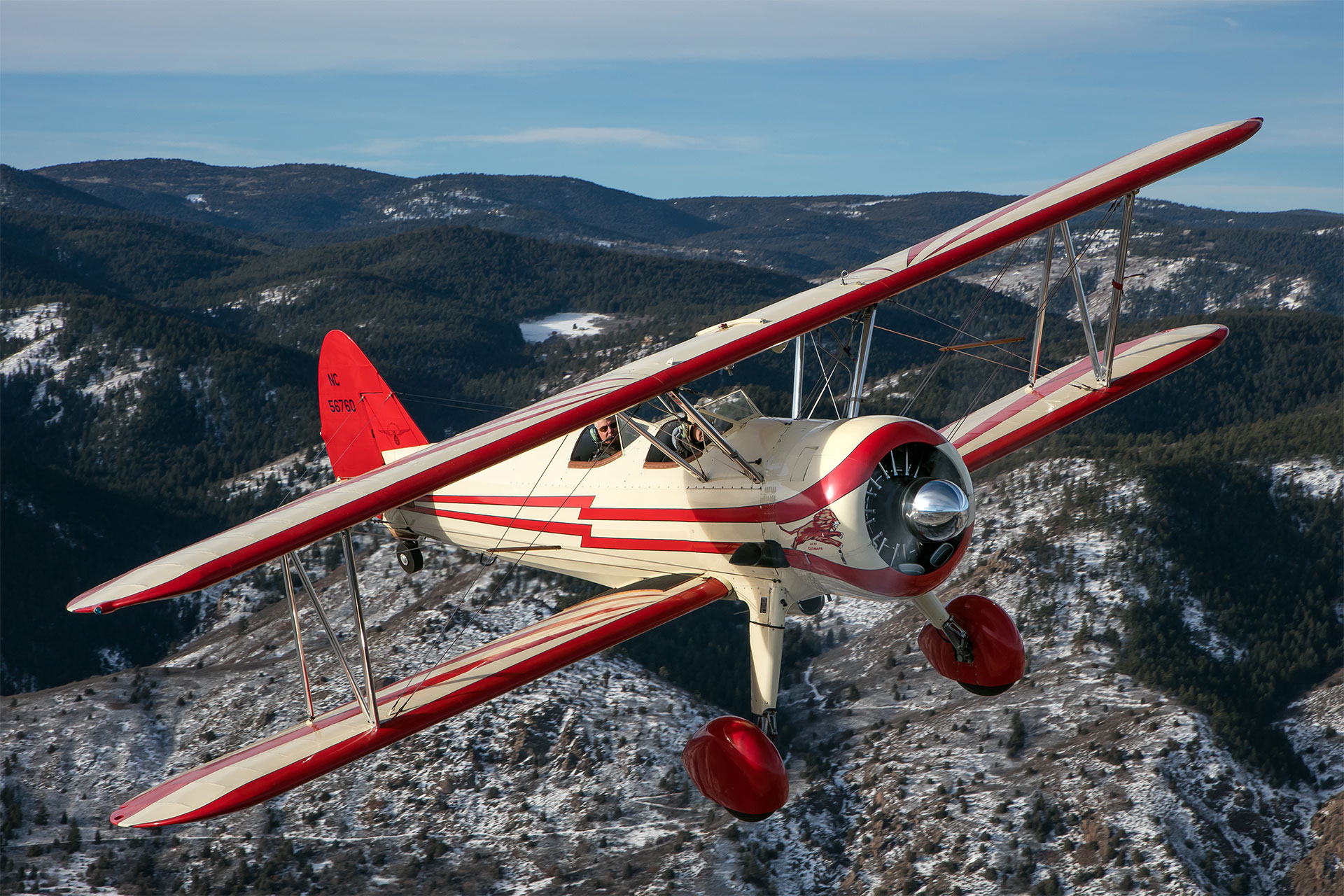

Great story!